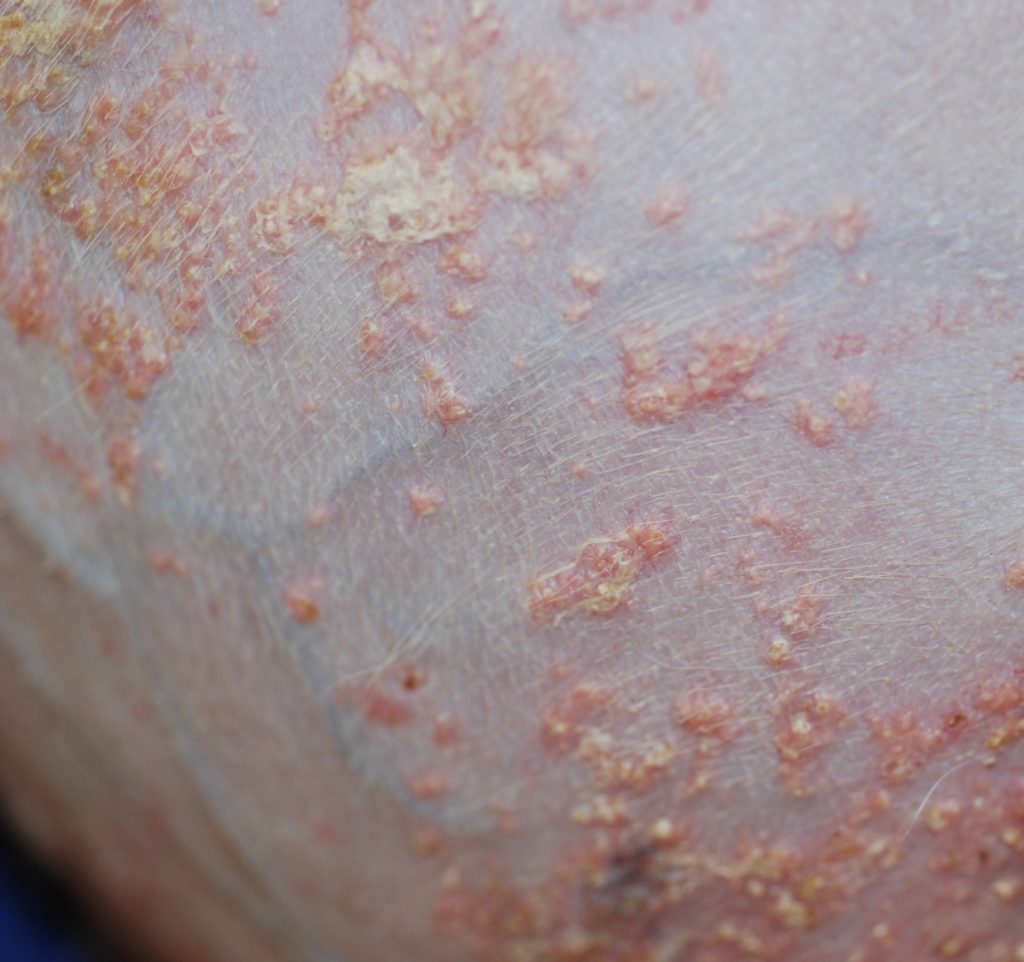Pet Spotlight/Case Study: Maximus Gets the Max Benefits from His Visits to ADRC
Maximus S. visited us at the Animal Dermatology Referral Clinic with itchy crusty sores all over his body. He had antibiotics prescribed before coming to see Dr. Seals which did not resolve the sores. Other symptoms included increased frequency of drinking water over the past year and urinating often.

This is Maximus on the day he first came to ADRC. He had sores at the base of each pinna/ear and on the side of his neck.
His physical examination revealed multiple red and raised papules at the base of the left and right pinna/ear flap. More papules with a yellowish-tan gritty crust were present on the surface of the papules and seen on the side of the neck, the back of the neck, and entire trunk. The papules were firm and the crusts had a gritty texture. The sores were very itchy when touched.

The back of Max’s neck had several red raised sores.
His skin was dry and very thin. Maximus also had a pot-bellied appearance. The team at ADRC collected a blood sample, which revealed values consistent with Cushing’s Disease. An ACTH stimulation test formally diagnosed Maximus with Cushing’s Disease. As per Dr. Seals’ recommendations, Maximus started on his medication to treat Cushing’s Disease.

Max’s abdomen had several firm red raised papules with a yellowish-tan surface grit. His skin was very thin where the blood vessels could be easily visualized.

Mineral deposits were noted in the dermis.
A biopsy of his skin confirmed the skin condition Calcinosis Cutis.
Calcinosis cutis in dogs is a rare disease caused by the buildup of calcium salt crystals. One typical symptom is heavy lumps that form under the dog’s skin, lips, and footpads. The bumps are skin lesions that occur due to abnormal calcium deposits in the skin. They’re made up of mineral deposits known as “apatites”. In Maximus’ case, the mineral deposits were noted in the dermis as you can see in the photo.
The calcium salts were deposited due to the underlying Cushing’s disease. Once Cushing’s Disease symptoms are controlled, calcinosis cutis resolves. To speed resolution of the skin lesions, we advised he receive topical DMSO gel applied to the affected skin daily until the skin changes resolved.
After treatment, Maximus was feeling much better!
Do you know someone whose pet may need our help? Please spread the word by sharing this with your family and friends. Thank you!
- Nov, 02, 2022
- Case Studies

